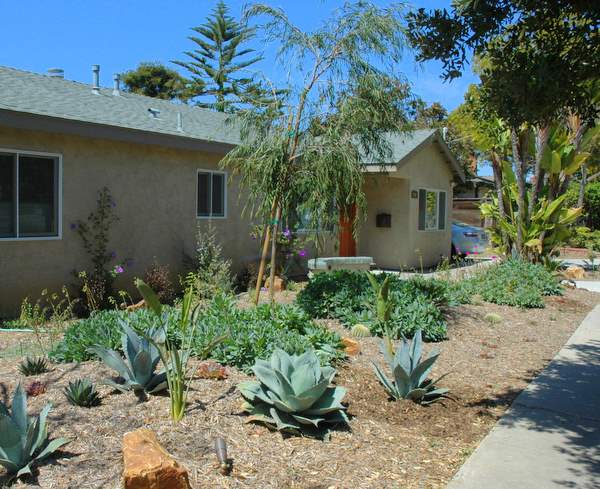Xeriscaping
Xeriscaping is a trend in landscaping that is becoming more and more popular across San Diego County. It is a style of landscaping that is more efficient and more easily sustainable than traditional landscaping. The term xeriscape comes from the Greek root “xeros” meaning dry. Xeriscaping conserves water, uses natural materials, and is mostly self-sustaining. It has many of the same attributes as water-smart or water-wise landscaping.



When considering xeriscaping, the San Diego County Water Authority suggests following seven helpful steps. Although these steps are helpful to follow on your own, you will find that when working with professionals from AAA Landscape Specialists, Inc., they will not only cover each of these steps in depth, but they will also assist to ensure that you achieve a successful xeriscaping project.
Planning and design is an important first step in achieving a beautiful, practical, and water efficient landscape. A good design will ensure proper space utilization, aesthetics, practicality, and irrigation efficiency of your project. When considering a lawn area in your landscape, it’s important to note that turf is the most water-thirsty landscape component, so carefully planning how much of your design should be turf is essential. There have been many recent innovations in irrigation technology that ensure slow, steady and very specific water application. Choosing the proper irrigation technology is another specialty of AAA Landscape Specialists, Inc. Factors to consider when choosing irrigation nozzles include low application rate and low gallon output. One excellent way to provide true matched precipitation at any arc and any radius is through the use of Hunter’s MP Rotator line of multi-trajectory rotating stream nozzles.. Utilizing this type of system will often save as much as 30% of your water usage. The installation of a “smart” irrigation controller such as the Weathermatic Smart Line with weather station or the Hunter irrigation controllers with “Solar Sync” is another effective tool in reducing excessive water use. Proper soil analysis may also provide valuable information about the types of soil preparation your property may require. If your soil is lacking in organic matter, it may also be lacking the ability to effectively retain water. If necessary, your AAA Landscape Specialist professional may recommend improving your soil before continuing on with any planting.
Another important principle that also will improve your yard’s soil condition is mulching. Two to three inches of mulch will keep the soil cool and reduce evaporation and weed growth. Mulch can be made up of rocks, wood chips, bark or shredded wood.
Choosing plant material is an important step in the design process. A common misconception is that in order to achieve a water conserving garden, plants that require more water cannot be used. There may be a place in your landscape for any of your favorite plants. By grouping plants according to their water needs, water usage becomes much more efficient. There are also many varieties of colorful low-water use plants. Some examples of these are the succulent varieties such as Foxtail Agave, Blue Flame Aloe, Crown of Thorns, Peruvian Lilly, Aeoniums and Sedum. Other options include planting wildflower varieties that are native to our area. For the San Diego area, the California Poppy, Wild Lupine, Columbine, Serbian Bellflower and Foxglove are wonderfully colorful options. Ornamental grasses such as purple fountain grass or yellow pampas grass are also popular options for ground covering. Finally, another important consideration when landscaping is the ongoing maintenance. By continuing to adjust your irrigation practices seasonally, you maintain the most efficient use of water. Organic fertilizers and composting will also continue to improve soil texture and help to maintain vigorous plant growth.